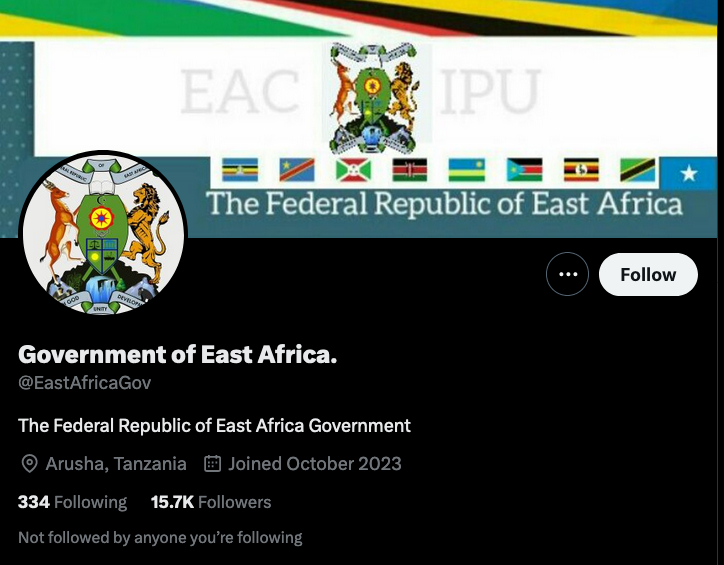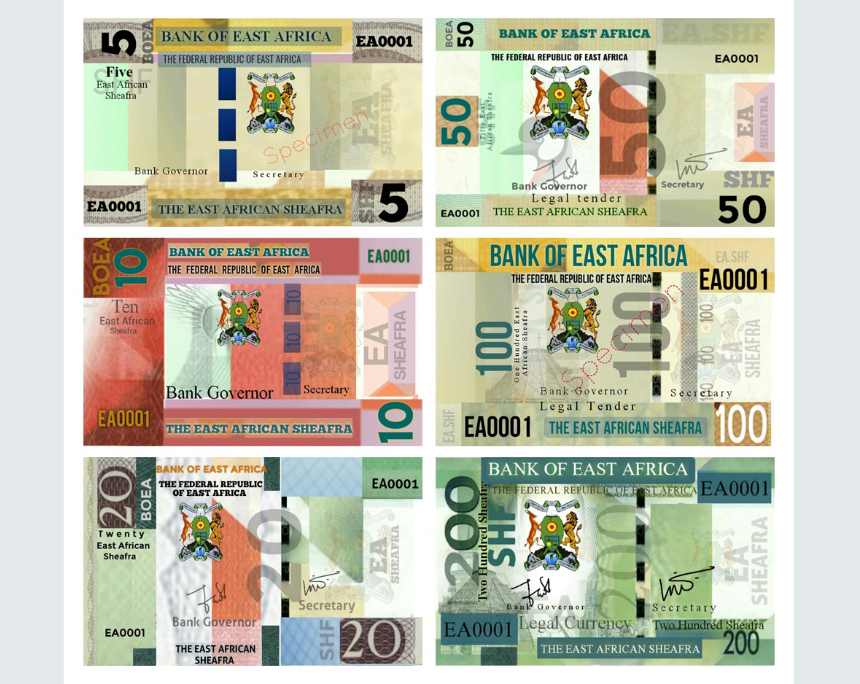When Is a Currency Launch – Not a Currency Launch?
by Michael Alexander
In an era when it can be far too easy to disseminate false information to the world in an instant, Michael Alexander of the London Banknote and Monetary Research Centre explores the ease and dangers of social media and the consequences of not following simple rules to verify information covering a subject as important as a currency union – least of all money in general.
At the beginning of February, an entity referring to itself as the ‘Government of East Africa’ began to receive plenty of online social and printed media attention when they published images of what they called a new currency entitled the SHEAFRA. Published on X – formerly known as Twitter, the pages of an entity called the East African Government which may intentionally seek to confuse itself with that of the official organisation of the East African Community with its headquarters in Arusha, Tanzania stated the new currency would ostensibly become the legal tender for the eight member states of East Africa.
Their account has been part of the X community only since October 2023 and with less than 175 followers, they managed to generate impressive attention for a proposed currency that does not exist – worse yet, from a non-existent reserve or central bank. As part of their bogus announcement, this entity convincingly provided an exchange rate for the SHEAFRA which they noted as being worth 76 US cents. Their information stated that the currency when released, would be with the 5 SHEAFRA denomination first and additional values would follow. It should be pointed out the announcement offered no information pertaining to security features, design descriptions or a date to implement an exchange-rate mechanism for member-states.
Members of the East African Community include The Republic of Burundi, the Democratic Republic of the Congo, the Republic of Kenya, the Republic of Rwanda, the Republic of South Sudan, the Republic of Uganda, and the United Republic of Tanzania. The Federal Republic of Somalia was just recently admitted into the East African Community on 24th November 2023.

The fake account “Government of East Africa.” now has over 15,000 followers. At some point, it managed to get a gray verification checkmark, which X ironically uses to distinguish real government institutions from fakes. Screenshot of X.
It is believed the publishers of the webpages of the East African Government are headquartered in Belgium but have no official status, in fact the Government of East Africa per-say, does not even exist. Instead, it was the job of the East African Community – who do exist to dispel the misinformation that the community had launched a unified currency and, the images purported to be six different denominated banknotes were in fact – all fakes.
The X account of the Government of East Africa published several posts which included six images of the SHEAFRA currency, all featuring the supposed crest of the East African Government. They even offered a plausible explanation of the name of the currency which was an acronym derived from the words SHILLING of EAST AFRICA and FRANC. The basic images included banknotes ranging in denominations from 5 to 200 and appeared to be designed using other graphic elements from previous banknotes issued from other countries. Taking into consideration the clumsy, amateur approach to the designs of these new banknotes, it was surprising that a significant number of media outlets predominantly within countries in East Africa who published the information as genuine news.

The East African Community decided to publish a statement of correction due to the widespread circulation of the false story. Unlike the fake account at the time, this offical EAC account does not have a verification symbol, which made it even more difficult for users to distinguish between true and false. Screenshot of X.
As the confusing news of this new currency spread as quickly as it often can on social media, the press offices of the East African Community categorically denied the existence of these banknotes and of a single currency. Using the same platform on social media as the false announcement appeared, the X account of the East African Community, members since 2009 and with over 183 thousand followers published a clarification which read –
‘The EAC Secretariat wishes to inform all our stakeholders that the Partner States’ journey to a single currency is still a work in progress. Kindly ignore any rumours circulating in social media on the unveiling of new banknotes for the region’
The EAC confirmed is the objective of the East African Community to unify the currencies of their present member states. Founded in 2013, the community outlines their groundwork for a monetary union within 10 years and allows the EAC Partner States to progressively converge their currencies into a single currency in the Community. On the 27th January 2020, EAC announced that it was in the process of harmonizing critical policies and putting in place the requisite institutions to attain a single currency for the region by 2024. The Bill for the establishment of the East African Monetary Institute (EAMI) has been assented to by the Summit of Heads of State. The EAMI would later be transformed into the East African Central Bank that would be responsible for issuing a single currency.
The author, Michael Alexander, is president of the London Banknote and Monetary Research Centre.








